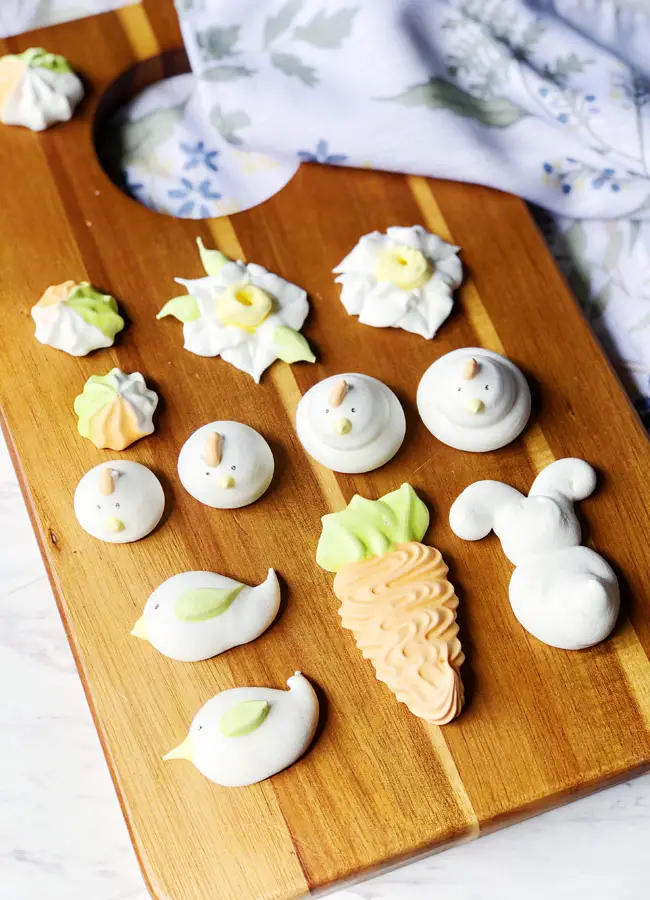
Today I’m going to show you how to make French Meringue. I want to draw your attention on the key points in making a gorgeous, glossy French meringue and, I’ll show you how to make Easter related meringue cookies.
Key #1
The first key point is clean tools. Meringue whips up best in a squeaky-clean bowl in which there’s no residual oil or fat left behind to disturb or deflate it. Thoroughly clean your mixing bowl, whisk attachment and any other dishes that will touch the egg whites, before you begin. You can use a splash of white vinegar or lemon juice.
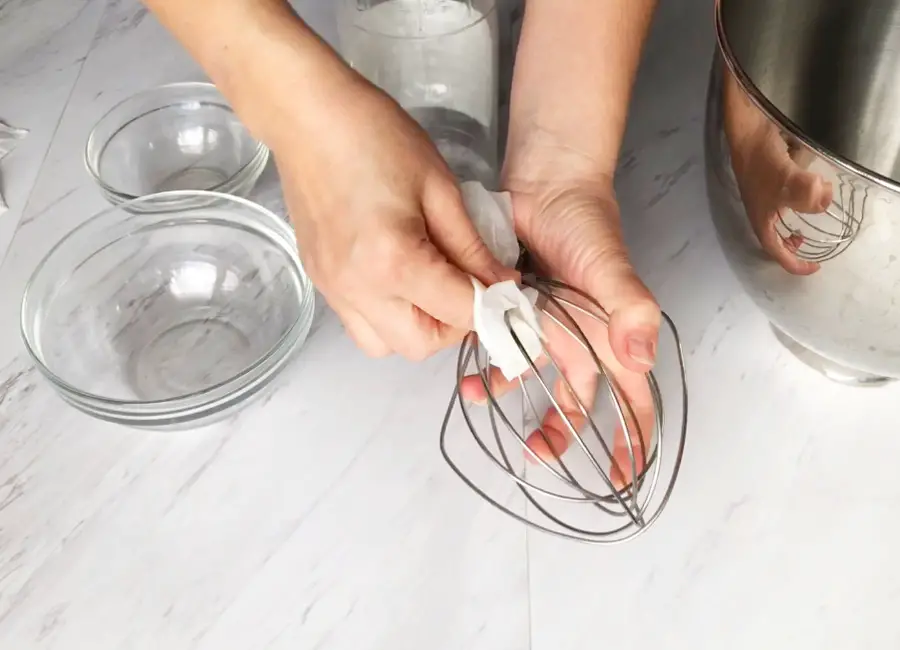
Key #2
The second key point is very carefully separate the eggs into egg whites and yolks. Not a drop of water, fat or yolk should get into the egg whites. You can use the three-bowl method to separate the eggs. Crack the egg and drop the white into one small bowl, and if the yolk didn’t break, and the white is uncontaminated, transfer the white to the mixing bowl for beating. If it gets contaminated, save it and start again. What temperature eggs to use is everyone’s personal choice. You can use cold egg, that’s because cold eggs separate more easily than room temperature ones. Then after separating, let your egg whites stand for about 20 to 30 minutes to reach room temperature to ensure volume when beating, as warmer eggs whip faster than cold eggs.
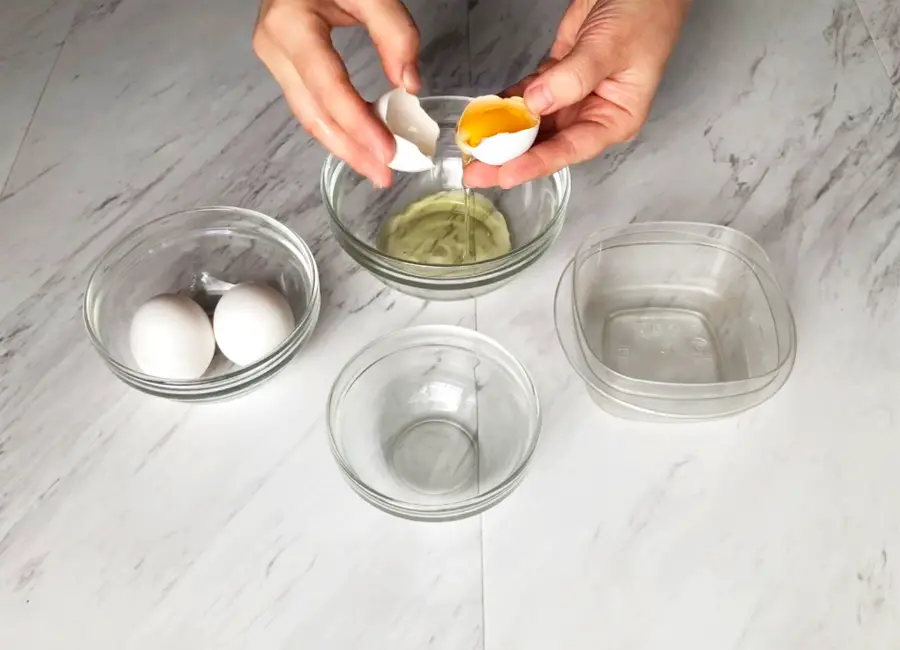
Don’t throw away the egg yolks. Cover them with a plastic wrap, so it touches the yolks and save it in the refrigerator for a few days, or you can freeze them. What can you make with the egg yolks? It’s can be pastry cream, different custard, cookie dough, homemade ice cream and much more.
Key #3
The next key point will be weighing the egg whites. I used three large eggs and the total weight of my whites is 92 grams. Now I need to use twice as much sugar. For 92 grams of egg whites I used 184 grams of sugar.

Key #4
And the next key point is sugar. Standard granulated sugar will work in meringues, but I prefer fine sugar which whips into egg whites easily. Consider using caster sugar or grinding granulated sugar in a food processor until very fine. I don’t recommend using store-bought sugar powder because it contains a significant amount of starch which may prevent from getting stiff picks at the end of beating.

Key #5
Lemon juice is another key point in making meringue. Using a few drops of lemon juice, vinegar, or a pinch of cream of tartar helps lower the ph and in turn strengthen the proteins and creates a more stable meringue.
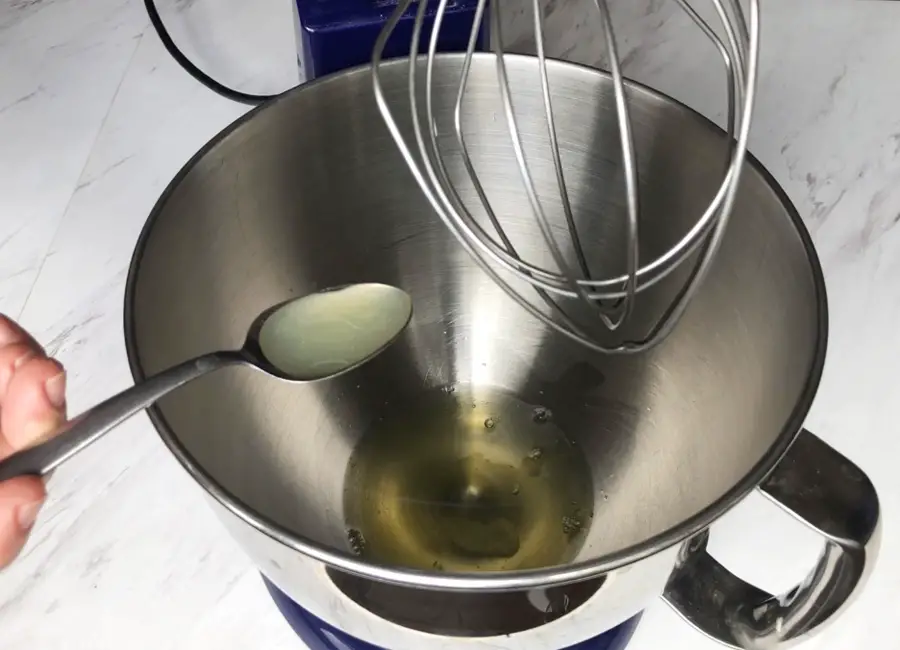
Step #6
The next key point on which it’s worth paying attention to, is the speed of your whisking. Start by whisking the egg whites on the low speed. The longer you whisk the whites on low speed, the more evenly they are saturated with air bubbles and the more stable the meringue at the end. When the white foam begins to appear, the mixer speed can be gradually increased.

Now, let’s see at what stage you need to start gradually adding sugar powder. As you see now, egg whites are already well beaten, but they literally flow from the whisk and don’t keep their shape at all.
That means that you need to whisk them a little bit more. We need to achieve the soft picks. Adding sugar early before the protein molecules in the egg whites have had time to unfold properly, you won’t get the well-aerated foam structure you need for a thick and stable meringue.
That’s exactly what I need, and I can gradually start to add the sugar powder.
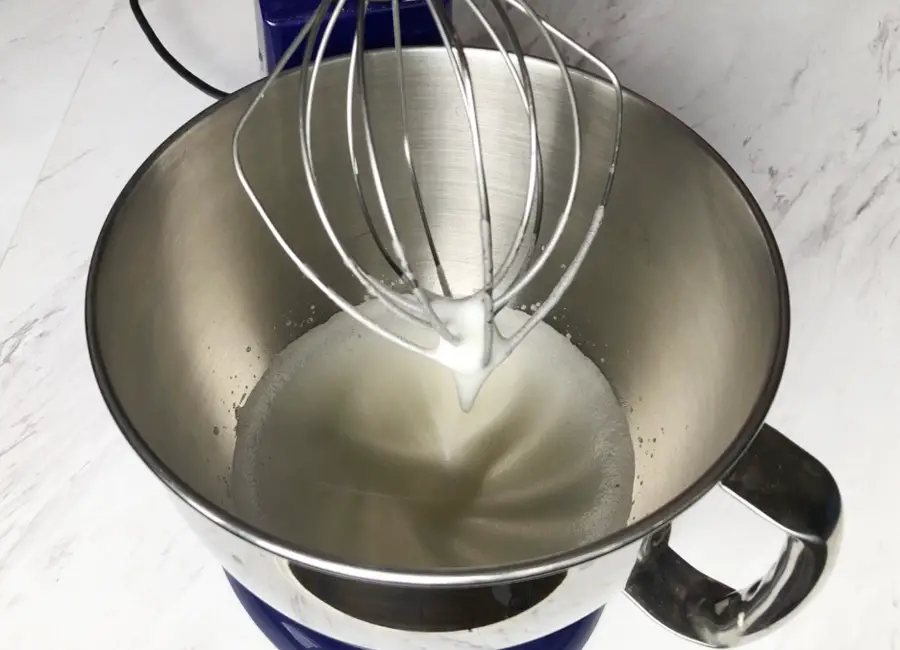 Increase the mixer speed to medium high and add the sugar in slowly. I add about 1 tablespoon at a time and wait about 20-30 seconds before the next addition. Not rushing this process is key to making the mixture stable.
Increase the mixer speed to medium high and add the sugar in slowly. I add about 1 tablespoon at a time and wait about 20-30 seconds before the next addition. Not rushing this process is key to making the mixture stable.
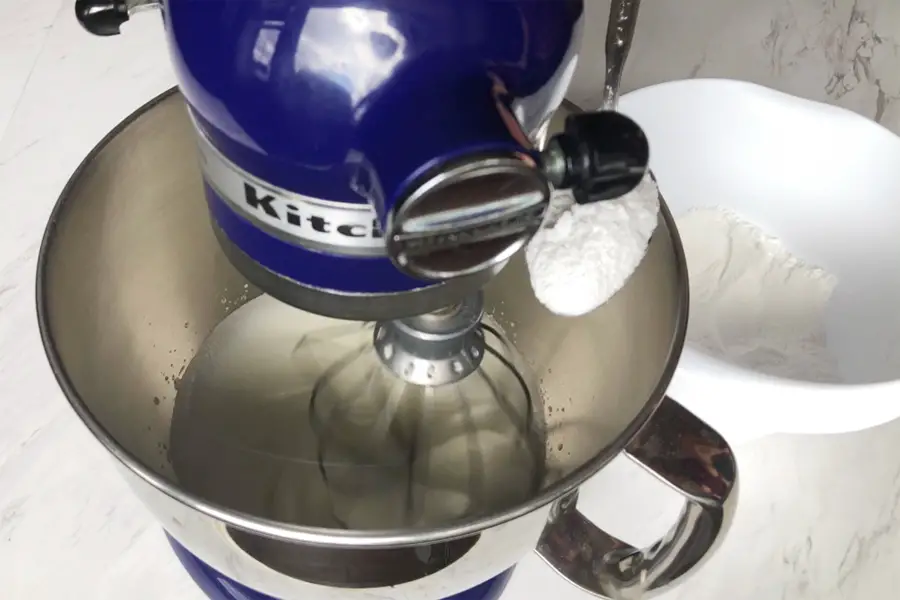 After the sugar is all in, you need to whisk the meringue for another 4-5 minutes on high speed, so that the mixture becomes smooth, glossy, has a very stiff texture and the powder sugar has completely dissolved.
After the sugar is all in, you need to whisk the meringue for another 4-5 minutes on high speed, so that the mixture becomes smooth, glossy, has a very stiff texture and the powder sugar has completely dissolved.
 Which you can check by rubbing a bit of the meringue between your fingers to make sure there are no undissolved sugar crystals left. The meringue should not feel gritty. If the meringue feels grainy, mix a few minutes more.
Which you can check by rubbing a bit of the meringue between your fingers to make sure there are no undissolved sugar crystals left. The meringue should not feel gritty. If the meringue feels grainy, mix a few minutes more.
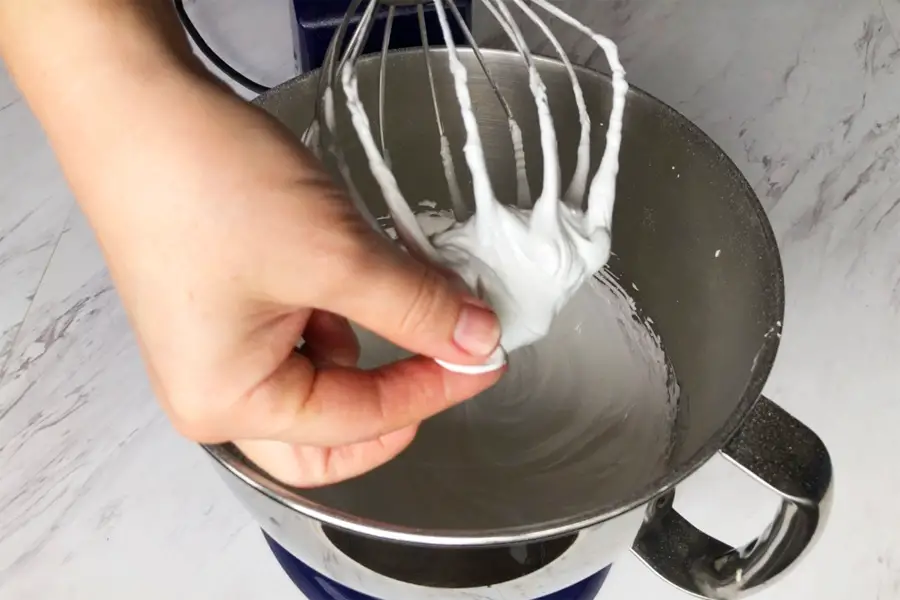
We’re done with the main work and now let’s see what we need for making Easter decor using the meringue. It’s piping bags and a small set of piping tips. I have a set of large size tips like open and closed star and plain round one and a set of smaller size tips like tip number 22 open star and tip number 31 closed star, tip number 12 round one and piping leaf tip number 70. We also will need a pastry nail and parchment paper squares that you can cut yourself. The last thing we will need is some gel food colors. I’m using yellow, green and orange Neon gel colors from Chefmaster.

If you don’t have a leaf tip, don’t worry. Take a piping bag and cut the end in the shape of inverted letter “V” like you can see on the picture.
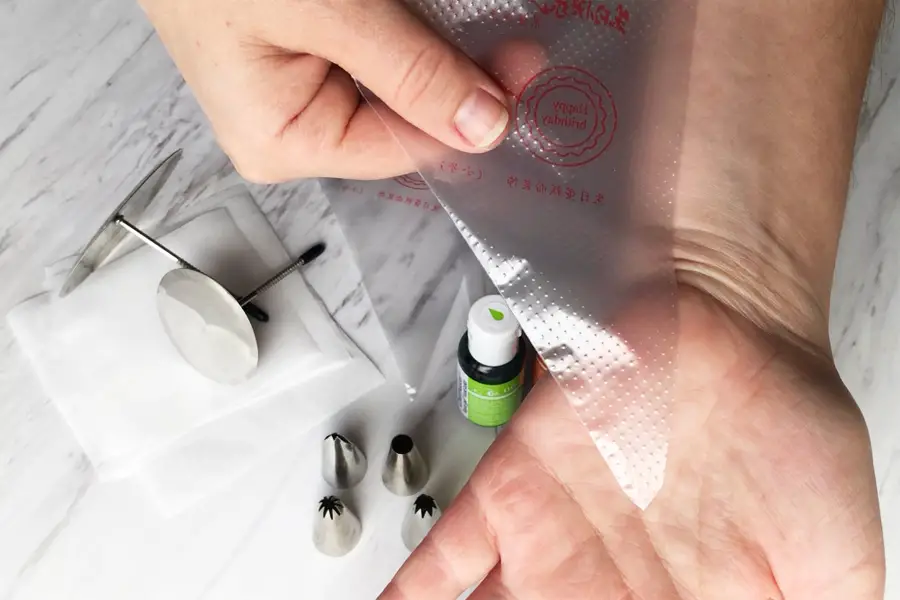
I set a side three servings of meringue that I will add colors too. I know that I need yellow and green meringue for a little detail work, so I just take a couple of tablespoons of meringue for them and a little bit more for my orange meringue. With the rest of the white meringue I filled up my piping bags with a different tips shape.

First let’s make the narcissus. Put a little meringue on the pastry nail to glue the piece of parchment paper square and using the leaf tip pipe the petals. If you don’t have a pastry nail it’s ok, you can pipe directly on the baking pan covered with parchment paper, the only thing is it will be a little uncomfortable. The middle of the flower decorates with yellow or orange merengue.
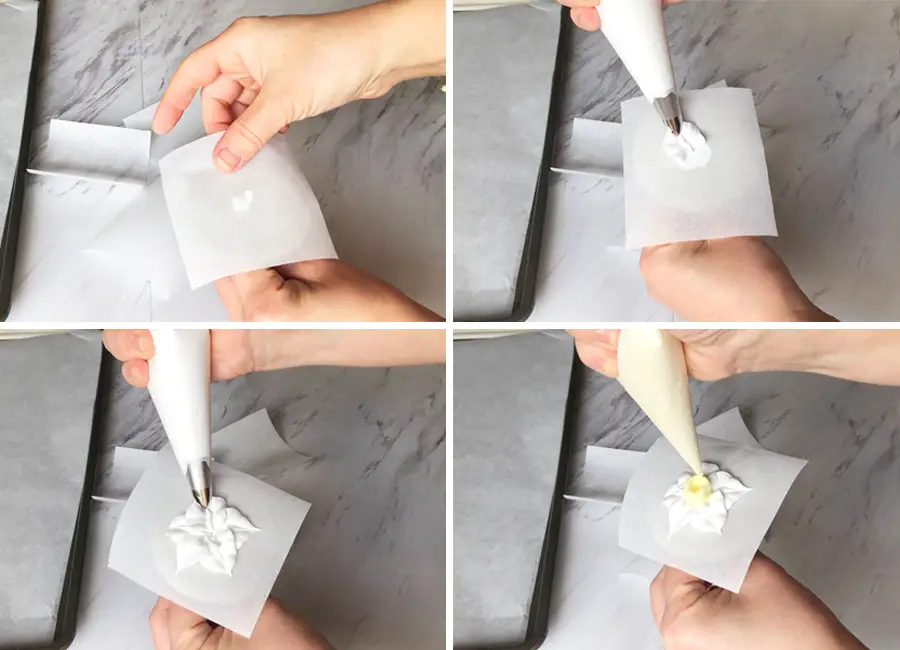
Now let’s make carrots. I use an open star tip number 22 and pipe the carrot. Using a green meringue, I make a little carrot’s tail.

Next, I will make cute bunnies. They will have a view from the back. You can use any plain round tip to pipe the bunnies, I use tip number 12.

Now let’s move on to the birds. I will make hens, chickens and birds using the same piping tip number 12.
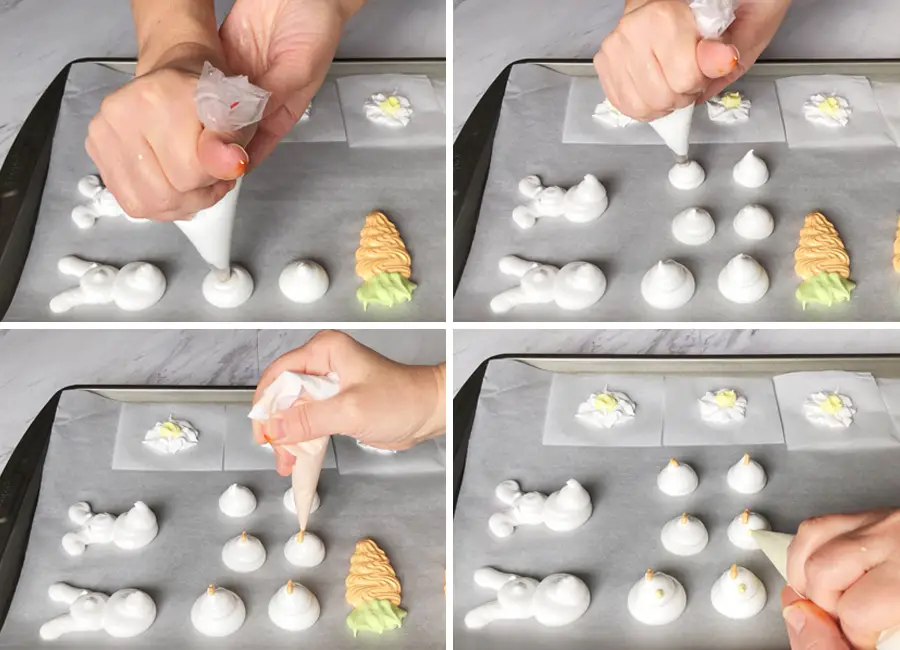
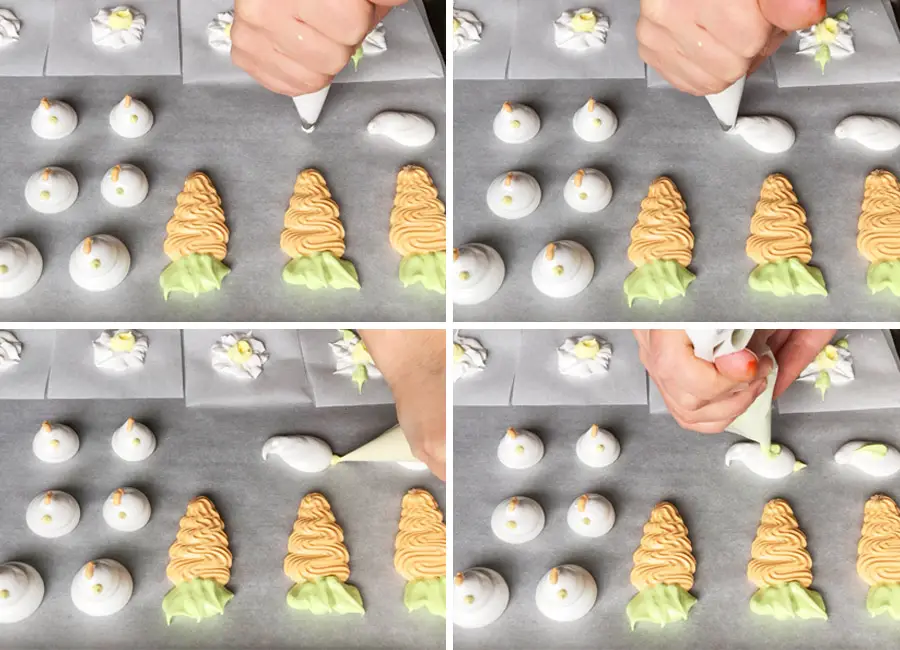
All the leftover meringue I collected in one bag and piped some small meringue kisses.
Dry the meringue in a preheated to 170-180F degrease oven with convection, if possible. Depending on the size of your meringue, bake for 60 to 90 minutes, or until the outside is crisp and the inside is dry. They should feel light and hollow. When done, the meringues should easily peel off the parchment paper. Turn the oven off, crack the door open, and let the meringues cool completely in the oven.

Baked meringue cookies may be stored in a covered container at room temperature up to two weeks.
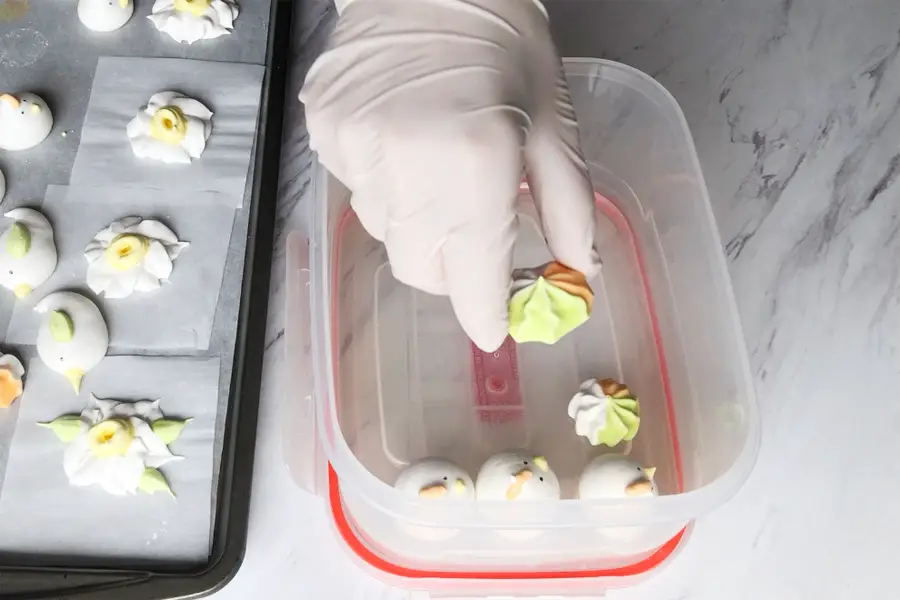
I really hope that my post will be useful to you.
If you have any questions leave them in the comment section below and I’ll make sure to get back to you.
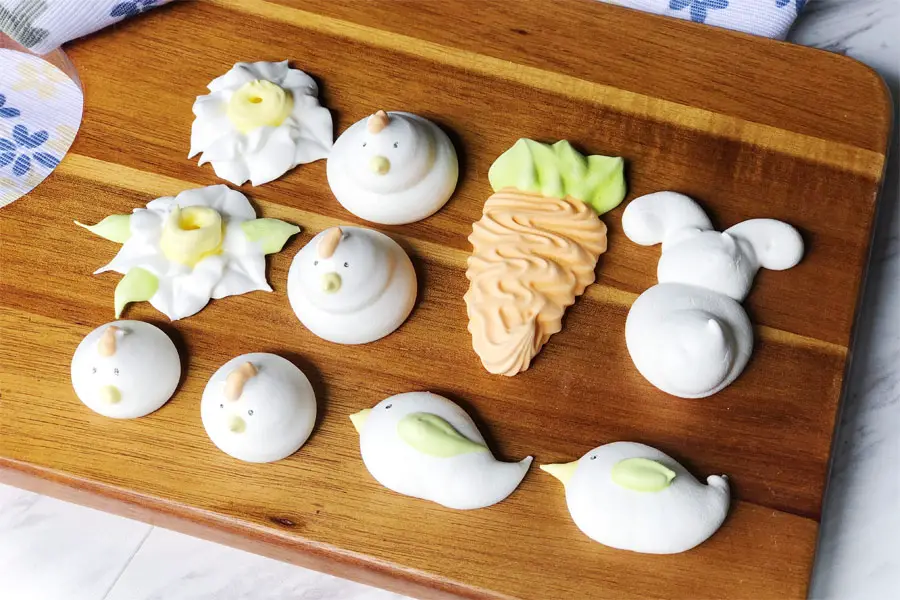
This post may contain affiliate sales links. Please see my Full Disclosure Policy for details.

FRENCH MERINGUE
Ingredients
Method
- Thoroughly clean your mixing bowl, whisk attachment and any other dishes that will touch the egg whites, before you begin. You can use a splash of white vinegar or lemon juice.
- Very carefully separate the eggs into egg whites and yolks. Not a drop of water, fat or yolk should get into the egg whites.
- Weighing the egg whites and take twice as much sugar.
- Use a few drops of lemon juice, vinegar, or a pinch of cream of tartar to helps lower the ph and in turn strengthen the proteins and creates a more stable meringue.
- Start by whisking the egg whites on the low speed. When the white foam begins to appear, the mixer speed can be gradually increased.
- When the egg whites are beaten to soft picks, increase the mixer speed to medium high and add the sugar in slowly. I add about 1 tablespoon at a time and wait about 20-30 seconds before the next addition. Not rushing this process is key to making the mixture stable.
- After the sugar is all in, you need to whisk the meringue for another 4-5 minutes on high speed, so that the mixture becomes smooth, glossy, has a very stiff texture and the powder sugar has completely dissolved. Which you can check by rubbing a bit of the meringue between your fingers to make sure there are no undissolved sugar crystals left. The meringue should not feel gritty. If the meringue feels grainy, mix a few minutes more.

Leave a Reply